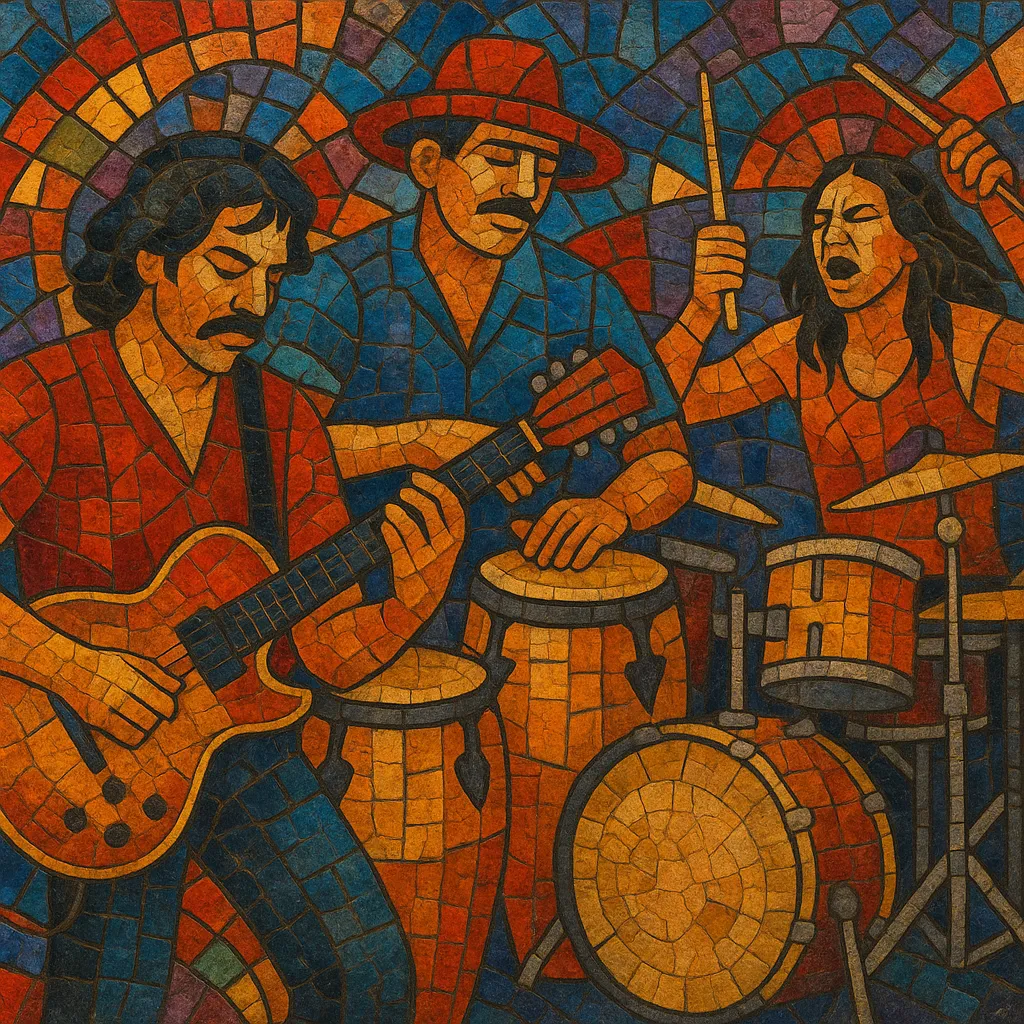Latin rock blends the instrumentation and attitude of rock with Afro‑Latin and Caribbean rhythms, percussion, and song forms. Typical bands combine electric guitars, bass, and drum kit with congas, bongos, timbales, and hand percussion, creating a driving, danceable groove grounded in the clave.
Vocals may be in Spanish, Portuguese, Spanglish, or English, and lyrics range from love songs and urban life to social and political commentary. Harmonically, Latin rock draws from blues/rock progressions but frequently incorporates modal colors (Dorian, Mixolydian) and montuno‑style vamps borrowed from salsa and Afro‑Cuban traditions. The result sits comfortably between club‑ready rhythm and arena‑sized rock energy.
Early bridges between Latin music and rock and roll emerged in the late 1950s with artists like Ritchie Valens popularizing Mexican melodies within a rock format. Across Latin America, local rock scenes formed in the 1960s, while in the United States Latino and Chicano musicians began fusing Afro‑Cuban rhythms with garage, blues, and psychedelic rock.
The style crystallized with Santana’s San Francisco scene: electric guitar leads, Hammond organ, and a full Latin percussion battery atop blues‑rock grooves. Groups such as Malo and El Chicano extended the template, mixing boogaloo, salsa, and funk with rock’s power and improvisation. This period defined the rhythmic and instrumental vocabulary—clave‑based grooves, tumbao bass, timbales/cáscara patterns—within a rock song structure.
Latin America’s rock scenes exploded: Soda Stereo (Argentina), Caifanes and later Maná (Mexico), Los Prisioneros (Chile), Aterciopelados (Colombia), and Los Fabulosos Cadillacs (Argentina) adapted the Latin rock palette to local contexts, often with socially conscious lyrics. The broader “rock en español” movement carried Latin rock’s blend into mainstream radio and international tours, while U.S. bands like Los Lobos bridged Tex‑Mex, roots rock, and Latin percussion.
In the 2000s and 2010s, Latin rock cross‑pollinated with indie, alternative, electronic, and hip‑hop, contributing to the rise of Latin alternative and Latin indie. Contemporary bands preserve the core rhythmic DNA—clave, montuno vamps, and layered percussion—while experimenting with modern production, festival‑ready dynamics, and multilingual songwriting.


